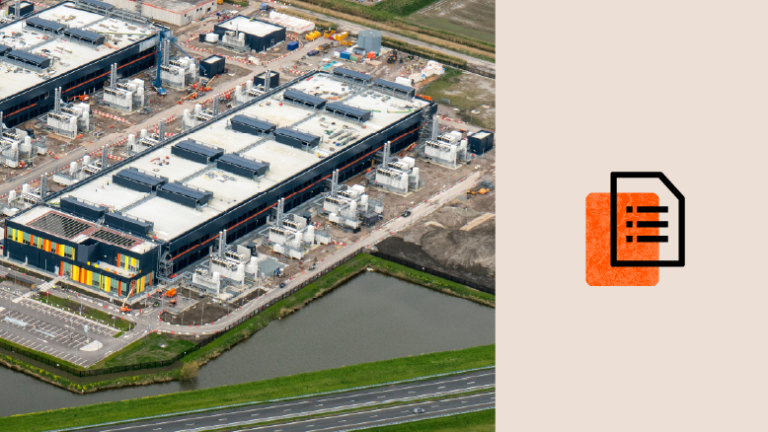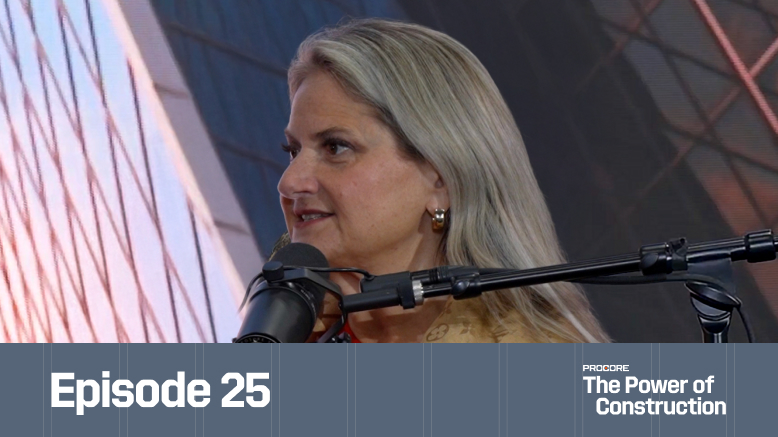— 9 min read
The Impact of Policy on Data Center Siting

Last Updated May 15, 2025

Tim Tuberville
Data Center Specialist
Tim Tuberville is a Data Center Specialist, focusing on a broad range of customer segments. Over the course of his stellar career Tim has proven to be a staunch advocate of the industry, championing and embracing new technologies while driving revenues for market leaders like Dell Technologies, and a host of others. His principled approach to service is the hallmark of his brand and allows him to positively impact his customer base. Tim holds a Bachelor’s degree in Public Relations, Advertising, and Applied Communications from Texas Tech University located in Lubbock, Texas.
Last Updated May 15, 2025

Data centers are in the spotlight, and data center construction is increasingly a policy issue on lawmakers’ agendas at every level of government. Developers face a rapidly shifting regulatory landscape and a spike in opposition to data center construction at the local, state and federal levels. They must now navigate an landscape that can impact cost and development timelines and present unexpected roadblocks to entitlements and other regulatory approvals that can make or break a project.
Understanding the tax, permitting, regulatory and zoning landscape of the jurisdictions in which a data center is located is critical in evaluating its viability. Increasingly, so is understanding the political environment surrounding a site — in other words, whether the regulatory landscape is going to change and how. This article examines how policy at the local, state and federal levels can affect data center site selection — and what project owners and general contractors should be aware of for their future builds.
Table of contents
Local Impacts on Data Center Site Selection
Much of the regulatory and political risk data center developers must evaluate in the site selection process is at the municipal or county level, as local governments typically determine land use policy and oversee entitlements and permitting.
Taking Advantage of Local Support
Attitudes towards data centers can vary dramatically between different jurisdictions and communities — even within the same market.
Local politicians and economic development officials in a growing number of communities have data centers on their radar due, in large part, to the tax revenue that they generate. These are buildings that often require billions of dollars of capital investment, pushing up the taxable value of properties far above what it would be with most other types of buildings.
With this in mind, some local governments are bending over backwards to attract data centers by creating targeted tax incentives, streamlining permitting and working proactively with developers to navigate the entitlements process.
Addressing Local Opposition
Many data center hotbeds that once rolled out the red carpet for developers have become more hostile towards the industry. In saturated markets like Northern Virginia, Phoenix and Atlanta, data centers are increasingly proposed close to residential areas or are replacing farmland in rural communities. Some of those projects have sparked fierce, organized opposition from residents and community groups who say data centers cause visual blight and produce noise, generator emissions and other environmental impacts that harm residents’ quality of life. In many cases, opposition groups have successfully pressured local officials into rejecting development efforts that had seemed like sure bets for approval.
As a result, some areas that were once the friendliest jurisdictions for developers have suddenly morphed into far riskier territory. Projects in jurisdictions like these face long, difficult approval processes and a higher possibility of outright denial by local officials. Legal challenges from residents or community groups can also cause delays.
Data center builders must be alert to these changing winds of opinion when evaluating development sites, and be alert to whether a site’s proximity to a neighborhood or community asset could trigger backlash capable of sinking the project.
Managing Zoning Regulations
Although much of the organized pushback against data centers has been in saturated markets, new territory doesn’t necessarily mean an easier path.
As with any construction project, developers must understand whether data centers are already an approved use for a site and whether the planned project conforms with zoning regulations. But it is now rare for data centers to be built as a by-right use.
In mature markets where some areas are zoned specifically for data centers, building on undeveloped land in those districts is becoming more and more difficult. And development is increasingly pushing into new markets that in many cases did not account for data centers in their land use planning.
Additionally, a growing share of data center construction has shifted from individual facilities to multi-building campuses spanning dozens or even hundreds of acres — large-scale projects that are unlikely to conform to pre-existing land use rules in any jurisdiction.
Developers point to slow permitting speeds in areas with little or no previous data center construction, where governments are often unfamiliar with developers’ needs and unprepared for the barrage of permitting, zoning and other entitlements needed to move projects forward.

Tim Tuberville
Data Center Specialist
Data center builders end up having to educate local officials as they go, slowing the development process to a crawl and dramatically increasing the risk of the project being derailed by unforeseen hurdles. In an industry where speed to market is everything, this can be a motivator to build elsewhere.
Overcoming State-Level Regulatory Roadblocks
While state-level tax and environmental policy have always factored in data center site selection, a growing number of states are pursuing legislation and other regulatory initiatives focused specifically on data centers that have wide-ranging implications for developers. These shifting political winds represent a significant source of predevelopment risk for the data center sector that builders need to consider during site selection.
Traditionally, the primary state-level concern for developers has been whether targeted tax incentives are in place that will make data center customers willing to operate at the site.
Tax incentives are one of the first things developers and end users look for overall when evaluating a potential data center site. Most firms will only build large-scale facilities in states that exempt operators and tenants from sales and use tax on the equipment housed inside data centers.
Key state-level factors that can affect data center development can include the following.
Tax Exemption Status
An individual data center can contain hundreds of millions of dollars worth of computing equipment that is typically replaced every 4–6 years. Eliminating tax on this equipment can represent tens of millions of dollars in savings over the lifetime of a facility, making such exemptions effectively a prerequisite for data center construction. The majority of U.S. states now have some form of data center tax exemption in place.
However, states including Georgia, Virginia and California have filed measures to end their state’s data center tax incentives or leverage those tax breaks by making them contingent on criteria like meeting certain energy efficiency standards or procuring a certain percentage of their power from renewable sources.
State Permits
State permitting and environmental rules have also long factored in data center site selection. Long permitting processes in states like California have made it difficult to complete projects on predictable timelines and played a role in driving development to other states. Meanwhile, state-level emissions restrictions have in some cases derailed or delayed projects by preventing the permitting of on-site diesel generators.
Concerns Around Energy Consumption
States are now considering a wide range of legislation and policies focused on limiting the impact of data centers’ skyrocketing energy use, imposing new environmental regulations and reforming data center land use rules. More often than not, the policies being pursued seek to create new restrictions or raise costs for data centers in ways that could change the site selection math.
Many of these data center bills pertain to the industry’s skyrocketing energy consumption and the subsequent impact on regional power grids. Specifically, lawmakers are increasingly concerned that data centers’ seemingly insatiable appetite for power could lead to grid instability and escalating electricity prices for consumers.
A growing number of states like Georgia, Virginia and Oregon have debated making data center firms cover a larger share of the billions of dollars needed for grid infrastructure upgrades to support them, measures intended to prevent those costs from being passed on to other ratepayers. Legislators in states like Texas have pursued bills that would give power providers greater authority to control how data centers consume electricity and order operators to disconnect from the grid on command.
Federal Policy and Site Selection
There’s little federal regulation focused on the data center industry directly that impacts site selection. However, federal energy and environmental policy can have implications for where data centers can be built.
As power continues to be the predominant factor in data center site selection, federal energy regulators have an increased hand in shaping the data center development landscape as developers seek creative ways to access electricity. Rulings by bodies like the Federal Energy Regulatory Commission (FERC) are effectively setting federal policy on everything from the legality of building data centers colocated with nuclear power plants to whether utilities can charge data centers more than other customers for electricity.
Developers must be aware of whether federal environmental rules could impact the viability of a site.
For example, large sections of major metro areas like Dallas and Los Angeles do not meet federal standards for certain airborne pollutants and are therefore designated as “Nonattainment” zones by the Environmental Protection Agency. This status allows the federal agency to impose strict emissions standards that, in certain cases, have prevented the deployment of diesel backup generators and thus forced developers to withdraw from projects.
Federal environmental rules may also play a greater role in site selection as more data centers utilize on-site natural gas generation. Building pipelines and other infrastructure to bring gas to these sites often requires federal permitting. Whether or not such permits can be obtained — and how fast — can determine the viability of these projects.
Stay updated on what’s happening in construction.
Subscribe to Blueprint, Procore’s free construction newsletter, to get content from industry experts delivered straight to your inbox.

Policymakers Are Paying Attention to Data Centers
The data center sector used to be a remote corner of the real estate and construction landscape. It was an industry that placed value on its “security by obscurity” and that generated little public attention. Data centers were built mainly in areas where such light industrial development was unremarkable — people living near data centers likely never knew they were there, if they knew what data centers were at all.
However, an unprecedented data center building boom and the rise of artificial intelligence have pushed data centers into the public’s consciousness. Many communities have seen an explosion of data center development transform the local landscape, sometimes in ways residents find troubling.
Data centers are now routinely the subject of headlines in national and regional news outlets, with much of the coverage focused on their consumption of power and water, the strain they sometimes place on regional power grids and their impact on nearby communities, resulting in an increased amount of debate over these facilities.
How Project Owners & Contractors Can Respond
In an industry where speed to market is critical, owners must now keep a close eye on the regulatory and political landscape where a property is located in order to understand whether a project can be finished on the short timelines tenants demand or whether potential for delays could push tenants to other jurisdictions.
For general contractors, these factors have a significant impact on scheduling and the likelihood a project will face delays. Awareness of these potential holdups can allow GC’s to mitigate likely risks and potential penalties when negotiating contracts. This is also an area where local contractors can provide value for owners with a national footprint who may have less experience navigating the local regulatory environment.
Was this article helpful?
Thank you for your submission.
100%
0%
You voted that this article was . Was this a mistake? If so, change your vote
Scroll less, learn more about construction.
Subscribe to The Blueprint, Procore’s construction newsletter, to get content from industry experts delivered straight to your inbox.
By clicking this button, you agree to our Privacy Notice and Terms of Service.
Thank you!
You’re signed up to receive The Blueprint newsletter from Procore. You can unsubscribe at any time.
Categories:
Written by

Tim Tuberville
Data Center Specialist
Tim Tuberville is a Data Center Specialist, focusing on a broad range of customer segments. Over the course of his stellar career Tim has proven to be a staunch advocate of the industry, championing and embracing new technologies while driving revenues for market leaders like Dell Technologies, and a host of others. His principled approach to service is the hallmark of his brand and allows him to positively impact his customer base. Tim holds a Bachelor’s degree in Public Relations, Advertising, and Applied Communications from Texas Tech University located in Lubbock, Texas.
View profileExplore more helpful resources

Who is accountable for innovation in construction?
Everyone says construction needs to innovate—but no one agrees on who’s actually responsible for making it happen. Is it the owner? The builders? The tech vendor? Or is innovation everyone’s...

Integrated Project Delivery in Practice: A Framework for Collaboration
On construction projects, traditional delivery methods put different stakeholders in their own silos. While the design team feeds drawings and specifications to the general contractor (GC), the GC’s expertise in...

AI Construction Tools: Optimizing Every Stage of Construction
Builders, like everyone else, are being bombarded with information about incorporating AI into their work. However, determining which areas to automate can be challenging. This article explores the features of...

Construction Technology Data Analytics: The New Standard in Construction
Much of the newest wave of construction technology is impressive: drones performing site surveys, 3D printers manufacturing walls on-site, 360° reality-capture cameras, and more. But all this visible technology collects...
Free Tools
Calculators
Use our calculators to estimate the cost of construction materials for your next project.
Templates
Find a template to help you with your construction project tasks.
Material Price Tracker
Get the latest U.S. retail prices and view historical trends for common building materials.
Glossary
Explore key terms and phrases used in the industry.
